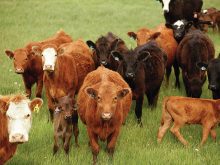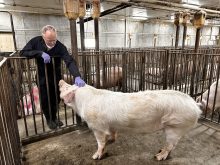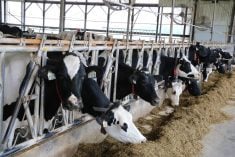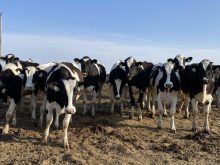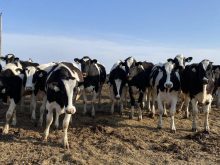Last month I went for a walk in the country outside of Moose Jaw where I found an adult male sparrow, lying frozen in the fresh snow.
My best guess was that the bird collided with a vehicle or that it had been the victim of a feisty free-roaming feline.
I carefully packaged it in several layers of plastic bags and kept it frozen until I delivered it to the Western-Northern Region of the Canadian Wildlife Health Co-operative in Saskatoon.
Wildlife pathologist Lorraine Bryan autopsied the bird. Her diagnosis was salmonellosis, a systemic bacterial infection.
Read Also

Beef check-off collection system aligns across the country
A single and aligned check-off collection system based on where producers live makes the system equal said Chad Ross, Saskatchewan Cattle Association chair.
The little sparrow was thin with no fat stores. The crop (which is an out-pouching in the esophagus) had deeply seated scabs of dead tissue.
The microbiology service at Prairie Diagnostic Services used traditional agar plates to grow bacteria from samples of these necrotic scabs, as well as liver and intestines and they found hordes of the salmonella bacteria in them all.
A contaminated bird feeder is a likely source of infection for this sparrow. Outbreaks of salmonellosis associated with bird feeders are all too common and in the most dramatic cases, people find many dead birds around feeders.
Feeders should be frequently cleaned and then disinfected with diluted bleach.
Also, bird enthusiasts should choose feeders that minimize fecal contamination of the seed and space feeders to limit crowding.
People handling bird feeders should take appropriate hygiene measures including wearing gloves and washing their hands to avoid contracting the bacteria.
Sparrows are both carriers and victims of salmonella infection. One dead sparrow on the prairie might seem insignificant but it points to the complex role of wild animals, including birds and rodents, in the maintenance and transmission of important disease-causing bacteria like salmonella.
My dad wondered if his nearby small flock of ‘open range’ chickens was at risk.
My answer was probably not, but it wouldn’t hurt to watch for signs of illness in the chickens, cook their eggs thoroughly and if possible, exclude sparrows from the coop where their chances of contaminating chicken feed is greatest.
What role do sparrows play in salmonella infections on larger livestock production systems?
Evidence suggests that birds including house sparrows commonly shed the bacteria in their feces, making them an important source of infection in swine and poultry operations.
Domestic animals can become very sick from salmonella infections.
In horses, for example, salmonella causes severe ulcerative inflammation in the large colon leading to life threatening diarrhea and dehydration.
Just like birds, livestock can also harbour the salmonella bacteria without signs of illness and it is this type of infection that poses the greatest risk for meat contamination.
Given that salmonella is one of the most important causes of food-borne illness in Canadians, controlling these infections at the farm level is an important priority to reduce the risk that salmonella will contaminate meat, poultry and eggs.
Examining sick and dead wildlife for disease is important to understand their role in maintaining bacteria such as salmonella on farms and how this relates to food safety and domestic animal health.
It is also important to think about excluding sparrows from livestock feed and water to minimize the risk of infection.
Our association with house sparrows is not a new one. Archeologists studying the earliest human dwellings have found evidence of house sparrow remains.
From its presumed origin in the fertile crescent region of the Middle East, sparrows spread along with human civilization and agriculture to the far corners of the world including North America. Equally likely is their long-term association with the salmonella bacteria.
If you find sick, injured or dead wildlife, please contact the Canadian Wildlife Health Co-operative (CWHC) at www.cwhc-rcsf.ca





